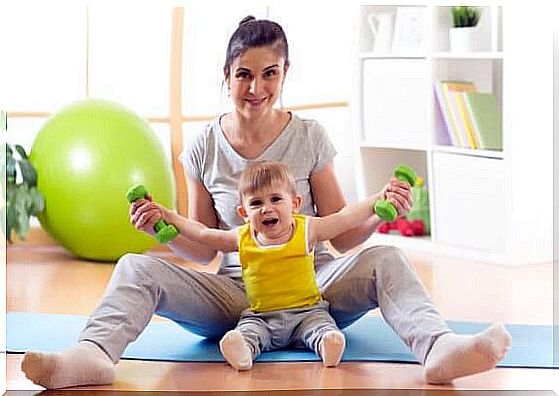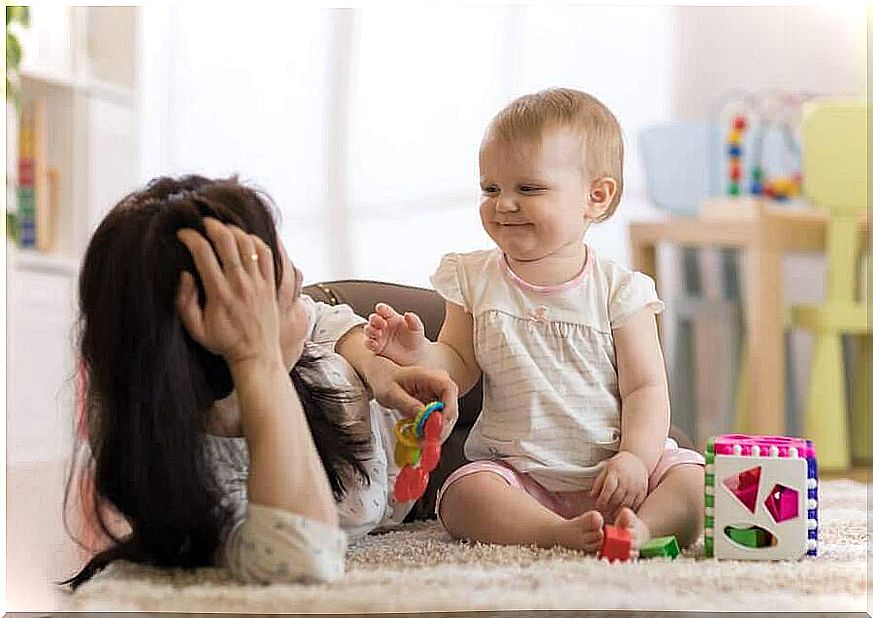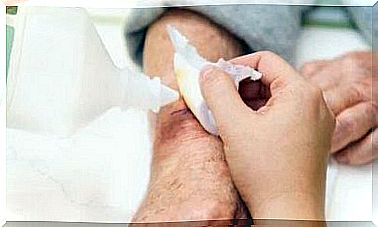How To Teach Your Baby To Sit Up
We almost always capture the moment our baby sits for the first time. Sitting on his own prepares him to crawl and then get up. It is part of the stages of psychomotor development.

As parents, we eagerly wait for our babies to achieve their first exploits, their first smiles, their first steps. Although everything is gradual, we are impatient. We want to see our baby sit up alone and quickly. This has happened to all of us. Do you want to teach your baby to sit?
Is the time to sit alone now? Watching your baby will give you the signals to determine if he is ready without risk to his back. The best thing to do is not to force the position. The baby will come by itself.
You need to give her the opportunity to spend as much time at home as possible in comfortable clothes and in a space that allows her to explore and exercise her body. When it reaches certain stages of its development, you can teach it to sit.
How do you know if your baby is ready to sit up?
F orcer the baby’s pace in all learning and developmen t is a mistake. Each child is unique. There shouldn’t be a schedule forcing her to do certain things at specific times. Some will take longer, others will get there faster.
Likewise, some children have their first teeth at 3 months and others at 8 months. So the same goes for the step of sitting alone. We have to wait until it reaches the necessary maturity. Some babies will therefore start to sit at 6 months, while others will do so at one year.
You can still watch for some signs. If the baby can roll over on his own when he is lying on his stomach, and then get back on his own on his stomach, he performs a movement that invigorates him, especially in the oblique muscles.
Another sign is that the baby is able to stand up a bit on his own when he is in his stroller. This usually happens around six months, but it is not critical. This can also happen between 8 and 9 months.
Sitting down: a great moment
Learning to sit supposes a great advance in the psychomotor development of the baby. This position allows him to strengthen the back muscles. He will thus avoid any discomfort and any possible problem when he begins to walk. As soon as he is able to sit up, his body will prepare to crawl and walk.
Therefore, you should not sit the baby down until he is ready. In other words, before his own muscles allow it. Your child will have more autonomy to handle toys and objects that catch their attention when they are able to sit up.
Sitting gives him a different perspective of the environment in which he lives. This position exposes him to new stimuli. It also promotes their intelligence and curiosity to know everything. Sensory exploration will awaken his senses.
Exercises to teach your baby to sit up
Are you wondering if it is possible to teach your baby to sit? V ou can, per our your baby p arvienne to sit, help strengthen his muscles with some exercises. You will not speed up the process. This will however make it easier for him to carry it out.
These exercises are another activity for sharing and enjoying time with your baby. It gives you the opportunity to participate and contribute, little by little, to the wonderful growth of your little one.
V child ur must have overcome other stages in psychomotor development has efore engaging in these exercises. This will include keeping your head upright when lying down and trying to sit up whenever you support your hands.
Do gymnastics with your baby

To do these exercises to stimulate your baby, place a blanket on the floor and get ready to work. You will thus strengthen his abdominals, his spine and his back, neck and arm muscles! It is also important that you have some of his favorite toys nearby.
- Place your baby on his back. Sit in front of him and take him by the hands. Then lift slowly , little by little, until that he sat down and couch ez it again. Repeat the movement three or four times .
- Always on the floor, sit your baby down and hold him by the hips. Then leave it for a few seconds, then lay it down so it can rest. Repeat the exercise three or four times so that your baby does not get tired.
- Sit your baby on your lap, lying on you. Play clapping or another traditional game such as “scions, scions, scions of wood”. It will take off the back of you at times in order to remain seated on its own. You can help him by holding his arms when he is not leaning on you.
- Place your child on their back. Put on a toy that draws his attention to him to entice him to take it. Your baby will then try to gradually stretch to catch it.
- We also recommend that you lie on your back and play gently leaning from side to side and vice versa.
Never exhaust your baby
If you notice that your baby is losing interest in what he is doing, stop exercising. As in any other advance, the secret to teaching your baby to sit is to stimulate him, and never force him. So avoid tiring him. Enjoy the moments together and keep trying. He will soon be ready for his first sitting photo!









